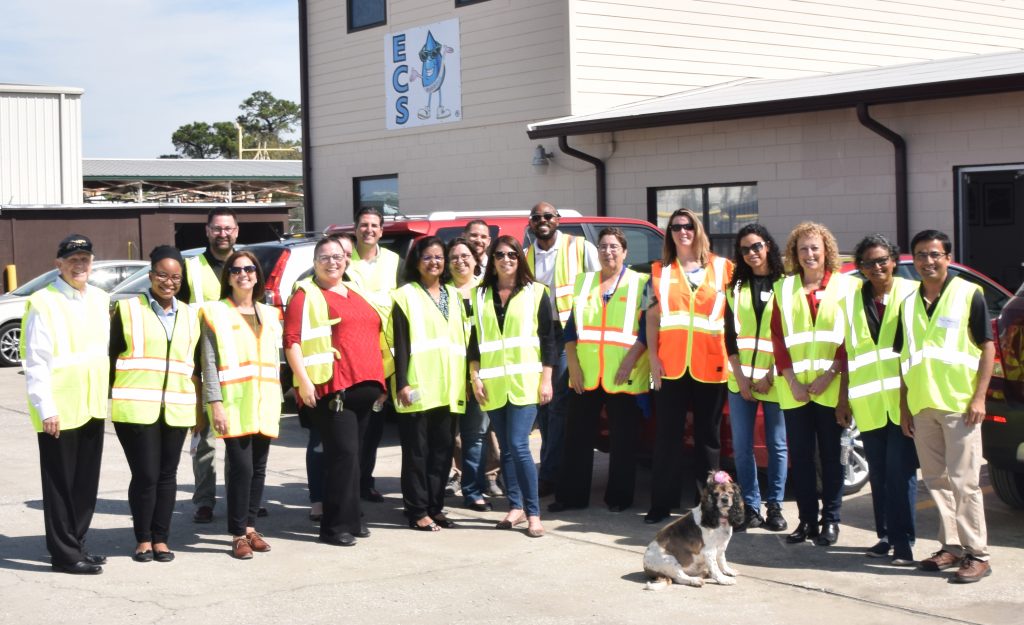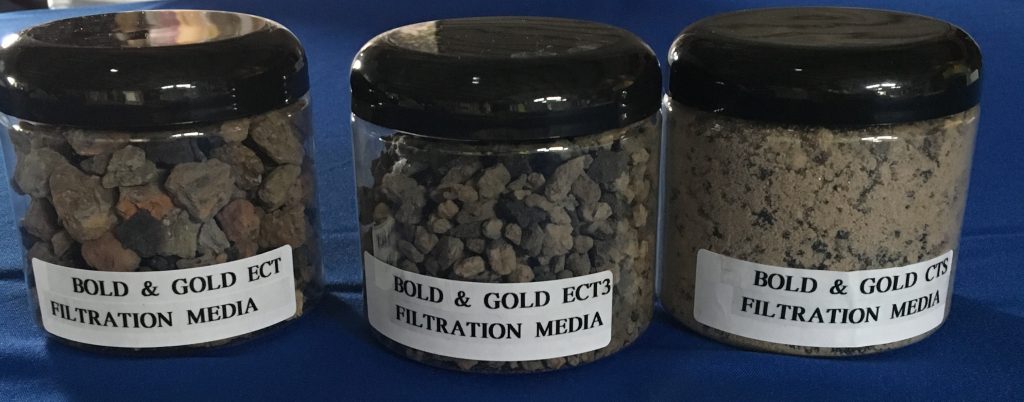The medical modeling capabilities of UCF’s Prototype Development & 3D Printing Lab
The lab digitally combined a laser scan of a person’s arm and a CT scan, then used a J750 Polyjet 3D printer to make a model with tissues, layers and materials. “These can be used for education, medical training and surgical skills practice,” says Jack Stubbs, lab director.
Neural Interface System Enables Throughput of 1,000-Plus Parallel Recordings
Benefits
- Provides for massive throughput of 1,000 or more parallel recordings, surpassing current BMIs
- Flexible silicon chip implant is substantially smaller than current BMIs
- Monolithic nature of the system can simplify surgical procedures for the implant
- All wires are internalized within integrated circuits, preventing susceptibility to corrosion
- Allows for battery-less operation by simultaneous wireless power and data transmission
Applications
- Neural prosthesis
For more information, refer to the technology sheet.
Team Members Take a Closer Look at Bold & Gold®: An Eco-Friendly Commercial Success
Members of UCF’s Office of Research recently took a field trip to learn about one of the College of Engineering & Computer Science’s most successful licensed technologies: the Bold & Gold® (B&G) water filtration media. Donning bright yellow and orange construction safety vests, staff members toured the operations of Environmental Conservation Solutions, LLC (ECS) in Apopka, Florida. ECS is the exclusive manufacturer of the B&G media mixes. Its president, Chris Bogdan, led the UCF group, which learned about the science behind B&G and the process of making the different B&G media mixes. They also viewed samples of the materials used to make the media. The mixes are proprietary formulas for use in greenroofs, stormwater or septic systems to remove elements such as nitrogen or phosphorus.

Team members of the Office of Research with Environmental Conservation Solutions in Apopka, Florida. Left to right: Dr. Martin Wanielista, Christelle Dasny, John Miner, Jennifer McKinley, Sara Garrabrant, Kristin Timpson, Chris Bogdan, Nivedita Patel, Amanda Reno, Antony Rios, Kim Smith, Dr. Ikiensinma Gogo-Abite, Dr. Dorothy Yates, Nicole Phanstiel, Kristina Gomez, Dr. Svetlana Shtrom, Sandra Jaggernauth, Dr. Raju Nagaiah, and ECS mascot “Molly the dog.”
The “dirt” on Bold & Gold®
Invented by Martin Wanielista, Ph.D., P.E., and Ni-Bin Chang, Ph.D., P.E., of UCF’S Stormwater Management Academy, B&G is a patented biosorption activated media filtration system that safely removes as much as 90 percent of pollutants from our most valuable natural resource: WATER. About a decade ago, the researchers recognized that nutrient pollution from stormwater runoff and wastewater threatened the quality of Florida’s waters. “Solving the problems of flood control and drainage were being done worldwide, but the water quality issue was being overlooked,” said Chang. “People weren’t seeing the issue—how nutrients affect water bodies on a long-term basis.”
“At the initial review by Tech Transfer, it appeared to be a recipe for dirt,” said assistant director Andrea Adkins. “Trying to make the case to spend UCF resources on patenting dirt—mixtures of crumbled up tires, clay, coconut husks and sand—to filter water wasn’t actually an easy sell,” she said. “There were a few people at the time who were skeptical and didn’t think UCF could do anything with it. But this many years later, UCF not only has issued patents on the compositions, their uses, and the systems, but UCF has had local companies with an international presence license the patents and sell products. UCF also holds trademarks for the B&G which are also licensed.”
UCF has eight U.S. patents and two trademarks for the B&G portfolio. Co-inventor Wanielista formed a company, STE LLC, to license the technology from the university. STE then sublicensed it to ECS to exclusively manufacture the media mixes. “This really is a success story that started with the opportunity and knowledge provided by the UCF faculty and students,” said Wanielista, “Then carried forward by Andrea. Dr. Chang and Andrea deserve so much credit.”
Partnering with Environmental Conservation Solutions
In his presentation to the tour group, Bogdan provided a brief history of ECS. “Before ECS, we were Plastic Tubing Industries, manufacturing corrugated plastic pipes. “When Dr. Wanielista started to look at using Bold & Gold® within a drainfield to treat water leaving septic tanks, he talked to our company about donating the drainfield pipe for his test systems: one at UCF and one at Indialantic Beach,” said Bogdan. That started our relationship back in 2010. “Then UCF started looking for partners to license B&G,” he said, “And we jumped at the opportunity. We restructured who we were and what we were doing business-wise, and we formed ECS.” As the exclusive manufacturer of B&G, ECS ensures consistency in the B&G product line.
Manufacturing B&G
As tour members learned, B&G is manufactured using the invention’s various formulations and compositions—different mixtures of 10 non-toxic, natural and recycled materials such as sand, clay, recycled metal-free tire crumbles and other kinds of recycled materials. Bogdan said that ECS works with clients to determine which formulation to use. B&G is quite versatile, with different compositions designed for specific uses, such as greenroofs, septic systems, sewer systems, stormwater retention or detention ponds, silviculture, agriculture, geothermal discharge, and aquaculture.
How B&G works
A low-impact technology, B&G works passively, without machinery, to filter polluted water. The media can last as long as 50 years, unlike other types of water treatment systems that depend on land availability and regular maintenance.
According to Bogdan, “It works by water moving through the media. So when water comes in contact with the media, the bacteria that live within the media feeds on the nitrates. We take out nitrogen, or we take out nitrates by bacteria feeding on the nitrate, and they give off nitrogen gas, which then transpires off into the atmosphere. The nitrogen removal happens biologically. The longer the water is in contact with the B&G media, the more nitrogen comes out.
“B&G also removes phosphorus. Basically, that’s done when water comes in contact with B&G, the phosphorus attaches to the media and undergoes a process called sorption or ion exchange, and that’s how phosphorus is removed,” he said.
Nitrogen and phosphorus from pesticides, fertilizers, and human and industrial waste are significant contributors to nutrient pollution found in stormwater runoff and wastewater. Though plants use the nutrients for growth, excessive amounts can cause overgrowth, choking waterways, and depriving aquatic life of oxygen. The pollutants can also leach into groundwaters, such as those that feed into Florida’s aquifers—critical sources of the state’s drinking water that lie just below the surface. The system makes the water recyclable—suitable for other uses such as lawn irrigation or for safely replenishing groundwater that is used to recharge Florida’s aquifers.
How ECS uses B&G
Of the various B&G compositions available, Bogdan said that ECS predominantly uses media containing sand, clay, and recycled tire crumbs for its sales. “A majority of our sales right now are in the stormwater industry in Florida,” Bogdan said. In many cases, ECS works with municipalities and developers to help them meet specific city, county or state regulations.
For example, ECS uses the B&G media in conjunction with best management practices (BMPs) that a government agency requires to control and filter stormwater runoff caused by impervious surfaces (such as roadways, buildings and sidewalks). When ECS partners with a shopping mall developer, for example, their team meets with the developer’s civil engineers to determine how a blend of B&G can be used with the land to manage stormwater runoff while meeting state regulations.
As for the future, Bogdan said that ECS has some pilot projects in Florida for different uses of B&G. The company is also planning to expand into South Carolina and is looking at opportunities in North Carolina, around the Great Lakes area, the upper Mississippi River valley, and the northeast.
When asked about the tour, research associate, Raju Nagaiah, Ph.D., said, “It felt amazing and unreal to see the dedication and passion of ECS’s employees and the UCF researchers. While others are more focused on visible problems, such as air pollution and global warming, they are pushing this unique and environmentally friendly technology to save our groundwater from contamination.”
Sandra Jaggernauth, too, was impressed. “As a technology manager involved with data management, we never get the chance to see the successful partnerships of UCF’s technologies. This was an exciting event to be a part of.”
After the visit to ECS, assistant director John Miner, who organized the trip, thanked Bogdan for the tour. “Chris, the energy that you and your team put into this tour was exceptional, everything was perfect, and it truly made the experience for us very positive. This is the type of partnership that we dream of. I think that there is so much more to come, and I can’t wait to see how far Bold & Gold® goes.”

